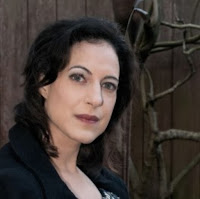“We all have to decide what kind of a world to live in.” ~David Alan Arnold
David is an aerial cameraman who films footage for such shows as Deadliest Catch, Survivor, and Ice Road Truckers, but he has also done work over major cities during his twenty-plus year career. What Lies Above the Clouds: A True Crime Story might be his second book published, but it was the book he wanted to have published right off the bat. Indeed, when he brought the manuscript to someone in the book business, the latter told him to write a book about himself first, which he did; and it was after that when What Lies Above the Clouds was published.
The book stemmed from David’s realization, around 2013, that a school bus stop in his town was being used by gangsters for such illegal activities as selling heroin and even the as-of-yet uninvestigated murder of one individual. When David originally approached the gangsters to ask them what kind of business they were doing, they told him it was a secret, and after that he would stand across the street from the bus stop when the kids were picked up or dropped off to make sure they weren’t hurt. Further investigation on his part turned up the information that the group was connected with a company which was run entirely by criminals, some of whom were on a Most Wanted list, and which was allowed to be run by corrupt local officials. Driven by a desire to keep children safe, he then gathered information for five years, and this formed the basis of his book.
David notes that people are able to get away with crimes because nobody knows what goes on, and also remarks that money is the most likely motive for police to allow Most Wanted criminals to hang out at a children’s bus stop. He notes that the gangsters involved don’t care about small children, and that, when he went up to them and confronted them, the gangsters themselves remarked that they were surprised that nobody in authority stopped them from what they were doing and that they, themselves, were remorseful and regretful about what they were doing. He also added that the media is also apparently involved in colluding to keep the crimes secret, remarking that reporters interviewed some witnesses to a crime for three hours, but that the story didn’t make the news, with what was being printed was what the police said about it.
 The FBI got wind of what was going on when David met a federal agent on an airplane and told him a few things that surprised the agent, who then asked if he had any proof. “I have 23 terabytes in the overhead bin,” was David’s response. The agent then looked at David’s material, and it was after that when David, at the agent’s invitation, met with other agents, who then asked to read his book before it went public; and David obliged, with the result being the involvement of the FBI when investigating. David also remarks that the increasing scrutiny of this case will hopefully also pressure public officials into getting involved and doing what they are supposed to to protect the public.
The FBI got wind of what was going on when David met a federal agent on an airplane and told him a few things that surprised the agent, who then asked if he had any proof. “I have 23 terabytes in the overhead bin,” was David’s response. The agent then looked at David’s material, and it was after that when David, at the agent’s invitation, met with other agents, who then asked to read his book before it went public; and David obliged, with the result being the involvement of the FBI when investigating. David also remarks that the increasing scrutiny of this case will hopefully also pressure public officials into getting involved and doing what they are supposed to to protect the public.“Everyone talks about wanting to make the world a better place,” David comments. “If you’re not willing to take a stand to make the kids on your street safer, I’m sorry. You missed your chance. That’s it.” He notes that he does things that other people won’t, and that he discovered the lines that people wouldn’t cross in the course of the past five years, as a lot of people were frightened away by the criminal activity. To those who might come across a situation similar to that which he did, he recommends documenting everything, adding that, thanks to such things as smartphone technology, it is easy to do so. He also remarks that the steps he took are available in his book, and that the things he did can also be done on social media.
Purchase David Alan Arnold's books from Amazon:
What Lies Above the Clouds: A True Crime Story
Help from Above: How I Went from Sweeping the Floor to Painting the Sky



